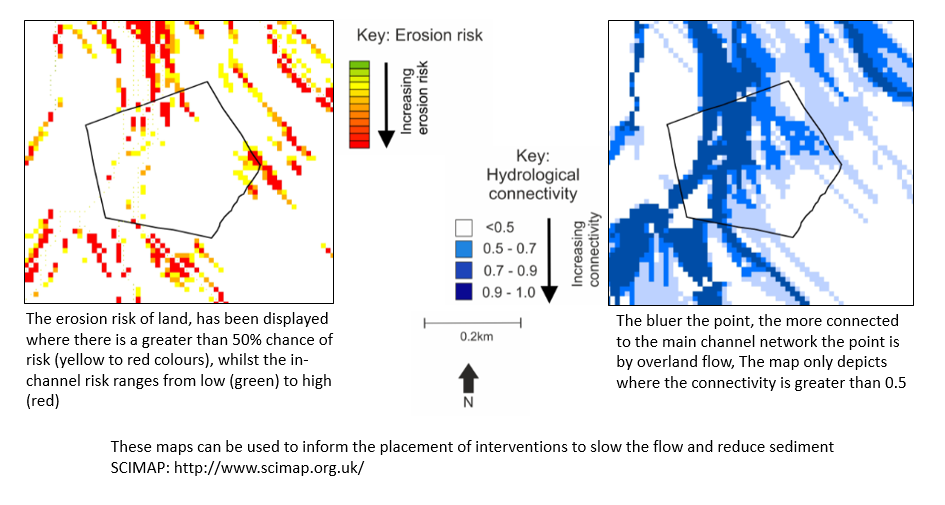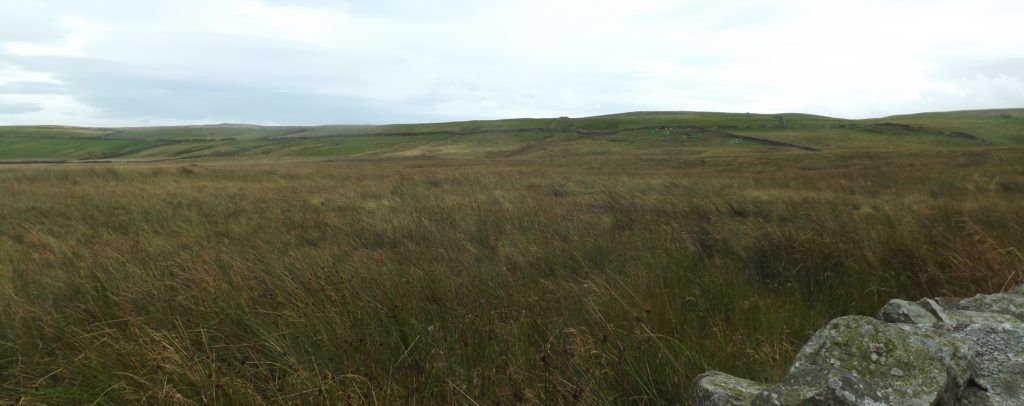iCASP is working on a project to integrate Natural Flood Management (NFM) into the National Trust’s ‘Payment for Outcomes’ trial. The Trust are undertaking the trial on some of their tenanted farms working with the Yorkshire Dales National Park Authority and Yorkshire Dales Rivers Trust. Their work will help to inform Defra’s new Environmental Land Management Schemes (ELMS). It seeks to pay for farmers for the environmental outcomes they achieve on land they farm.
The iCASP project is focused on identifying opportunities for NFM measures and discussing with farmers how NFM could fit into a payment scheme that would make business sense for them. These valuable insights will help inform future payment schemes which focus on payment for outcomes.
iCASP produced maps of each farm showing the parcels of land tenanted from the National Trust. The land parcels were overlaid on to maps, produced from SCIMAP. These maps show areas of risk related to diffuse pollution (e.g., fine grained sediment) and the connectivity of overland flow of water to the main channel network – together, these maps show which areas of land could benefit from further management. This allows us to generate ‘opportunity maps’ that indicate where NFM interventions might best be sited; for example installation of a leaky dam in a particular location might work well to slow peak flows of water or buffer strips to help reduce sediment (soil) being washed away.

Ground-truthing of the map outputs is crucial to understand the farm in more detail to ensure NFM opportunities are placed in the correct locations. For example, smaller flow pathways that connect sediment and water to the main channels, may not have been picked up during the modelling due to the resolution of data used. Speaking to the land owner is vital at this point to understand how the land is currently used and managed and where there are current issues (e.g., waterlogged soil). This is another layer of information that can be used to ground-truth the modelling output and also verify the locations of potential NFM interventions.
We have recently visited five farms taking part in the trial to do this ground-truthing. This has meant we’ve been able to annotate all the maps to verify the modelling output. This has allowed us to come up with a better understanding of which NFM interventions could be used and their locations on the farms.

The next step in this process will be to meet with all the farmers and other organisations involved in the project to share the knowledge gained by the process and produce final maps of the suggested interventions. Meeting with the farmers will also provide valuable feedback on the opinions of NFM, which interventions the farmers would be willing to install on their land and how these efforts might be incorporated into a payment scheme that pays the farmer for the environmental benefits they produce by installing NFM. iCASP will feed the key points of these discussions to DEFRA to inform the development of ELMS as well as share this useful insight with other projects looking at payment for outcomes (e.g. the Horizon 2020 CONSOLE project iCASP is part of). The National Trust will use the insights to evaluate how NFM could be incorporated into their Payment for Outcomes trial.
